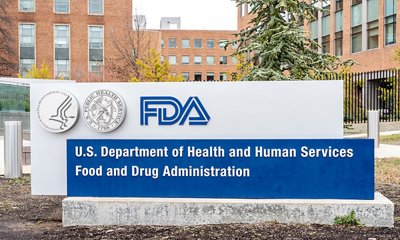Typing and Characterization of Microbial Isolates
Beyond the Species Level (and making something out of the microbial monitoring scheme)
Expert: François Bourdichon Food Safety Microbiologist, Scientific Collaborator, DISTAS, Università Cattolica del Sacro Cuore

In an early 2022 publication of Nature Scientific Data, 1,484 genomes from Listeria monocytogenes strains collected in 19 European countries were compiled in one dataset, providing the most accurate pangenome of the species to date. This constructed dataset establishes a basis for understanding the microbial ecology of this major pathogen of concern for the food industry and how certain genetic traits allow the pathogen to adapt to its environment.
It was only around twenty years ago that the first genome of Listeria monocytogenes strain EGDe as published in a “Science” paper, after a five-year European project involving several research institutes around Europe.
The scientific knowledge and capacity in the field of genomic sequencing has been continuously developed during the last two decades. What are the opportunities for the Food Industry?
Food safety and quality practices generate through monitoring, control and surveillance plans, an enormous quantity of data. Currently the true power of all this data remains to be harnessed.
In recent food contamination outbreaks, the absence of pathogens in finished product testing has been the main focus in the communication strategies of the companies involved. However, the absence of proof is never the proof of absence.
“Currently the true power of all this data remains to be harnessed”
Artificial intelligence and Food Safety 4.0 is one of the emerging and promising trends to capitalize the available data and identify weak signals at the source, before they become concerning, if not out of control.
The EU2073/2005 regulation, establishing the microbiological criteria for foodstuff, has a limitation in protecting the general population: testing food at final product testing is, by design, limited and often of poor relevance in ensuring safe food production. Thousands of “non detected” results have no meaning in face of clinical cases. Though these limitations are indeed addressed in the regulations, implementation focusing only on microbial monitoring of finished product is unbalanced. If all stakeholders are not fully aware of the rationale behind the regulations, it becomes a performance objective for the food safety management system instead of a safeguard towards consumers.
The EU178/2002 regulation, a.k.a. the European Food Law, placed the responsibility to produce safe food with the food business operator. It is therefore paramount to perform a dedicated risk analysis for each entity individually and identify, based on the hazard analysis and characterization, the necessary control measures to mitigate the risk from pathogens of concern. This risk analysis is not done once and forever. It is based a priori from the available evidence, and updated regularly from the internal a posteriori evidence, i.e., the outcome of the microbial monitoring scheme. All stakeholders should be familiar with the most recent risks and be aware of their role in the mitigation.
There are numerous publications available in the scientific press about resident strains of pathogens of concern surviving for years, even decades, in the production premises or in the processing environment
(Listeria spp. for wet and chilled processing environment, Salmonella spp. for dry and hot processing environment, Cronobacter spp. for end-consumer population below six months – Hazard Analysis and Risk-Based Preventive Controls for Human Food: Draft Guidance for Industry (page 18), Regulation and modification.
“When a plan has been implemented, the actions are most commonly only corrective”
This point is embedded in the EU2073/2005 and EU1441/2007 update: implementation of processing environment monitoring schemes should have been in place for quite some time now. And yet, they are often still missing. Most concerning, when a plan has been implemented, the actions are most commonly only corrective (implementation of additional cleaning step) and not preventive. An investigation towards a root cause should be considered, the questions “Why is this strain resident?” and “What specifically could be done to get rid of it?” needs to be answered.
Until 2012, sequencing the whole bacterial genome, or even long stretches of sequences of microorganisms, was both time-consuming and costly, limiting the approach to a set of chosen few. Then ‘Next Generation Sequencing’ (NGS) changed the game completely. Nowadays, establishing the sequence of a Listeria monocytogenes strain does not require a European funded project, and will most certainly not be enough for a “Science” peer reviewed paper as it used to be twenty years ago. NGS technologies have a wide range of applications, including the sequencing of microbial genomes and culture-free identification of microbial communities.
The human and food safety national and trans-national authorities already use sequencing for the comparison of isolates from clinical patients vs. isolates of food origin, enabling the rapid detection of outbreaks of foodborne disease at an early stage, or eventually tracking a low-level signal over the years.
“Whole Genome Sequencing improves the detection, surveillance and investigation of food-borne diseases and outbreaks”
Whole Genome Sequencing (WGS) was introduced first in the US in 2008, and soon replaced Pulsed Field Gel Electrophoresis (PFGE) to become the FDA’s preferred method for identification and tracking of pathogens isolated from food samples. Numerous Food Safety Authorities now use the technique widely in other regions of the world. Thanks to the determination of an almost complete draft DNA genome sequence, WGS improves the detection, surveillance and investigation of food-borne diseases and outbreaks. The technology provides uniform typing systems across the environmental, animal, food and human sectors, offering the potential to trace food-borne contaminations back to its microbial sources. Regulatory bodies can now identify the origin of small outbreaks with limited number of clinical isolates or identify long lasting contamination events causing only sporadic cases in the population.
Outbreaks can be traced back to their source and geographical origin more specifically than before. It turns out that operators with a microbial monitoring scheme on finished product providing compliant results do end up implicated in food-borne outbreaks. Finished product testing is not sufficient to detect low prevalence contamination, and the food business operator was unaware of a concerning situation present prior to the outbreak. This is a nefarious situation, both for the consumers and the food company, as food-borne outbreaks are linked to closures of production facilities, momentarily or definitively.
“Applications for the food industry range from source tracking of bacterial contaminants within the factory to determination of biocide resistance that could impair the cleaning protocols and can inform a more efficient use of cleaning products”
The usefulness of these tools is gaining more and more interest in the food industry, and implementation of in-house solutions has started. Applications for the food industry range from source tracking of bacterial contaminants within the factory to determination of biocide resistance that could impair the cleaning protocols and can inform a more efficient use of cleaning products. The food industry generally can now begin to consider refining contamination tracing using high resolution tools, for a better understanding of bacterial introduction, transmission and persistence in food production environments. Recent advances in rapid, high-throughput DNA sequencing have revolutionised the study of biology, and provide more than enough information to perform a microbial risk assessment (MRA) to enhance food safety and security.
On one side, we have the food industry looking to confirm suspicious colonies of microorganisms of concern.
On the other side, we have a set of typing techniques, phenotypic and genotypic, providing partial or global information. Most interestingly, some new techniques provide results in an actionable window—within days the information is available.
Now widely used for monitoring, WGS is more accurate than a serotype, and more discriminatory than PFGE, ribotyping and RNA 16s or 23s sequencing. It can show relationships between strains with highest resolution.
“WGS can show relationships between strains with highest resolution”
WGS therefore provides the ability to:
• Differentiate sources of contamination within food industry premises
• Determine which ingredient was originally contaminated and therefore narrow the search for the source of a contaminated ingredient in case of several potential sources
• Determine unexpected vectors for food contamination and provide information for root cause analysis
• Determine phenotypic properties of isolates such as antibiotic resistance, virulence or sensitivity to cleaning agents (biocide resistance) or adherence to surfaces (biofilm formation)
Since it looks so powerful and straightforward, one might wonder why it is not widely implemented yet and actually far from it. Though the cost has drastically dropped, being able to consider WGS as a routine technique remains distant. The time to result is still a factor of concern, it might be just days; but having results hours would be preferred and more actionable. While we might reach this point one day, this is not the case yet. The other issue is the data analysis step. The large quantities of data WGS generates require technical bioinformatics and computational knowledge to manage and analyse which is also costly to develop and maintain in-house for most companies. Nevertheless, the added value of WGS and the information and insights provided should overcome these pitfalls. Currently, it still doesn’t. There is a lack of awareness and understanding of the potential of molecular microbiology for the food industry (and not only for Quality and Food Safety related concerns). The lack of standardization of this analysis does not help either.
For a while longer, the characterization of isolates remains operational in only a limited set of expertise centers, internal to major companies or service providing companies. However, the education should already be initiated and implemented, as we have seen in major recent outbreaks that awareness of resident isolates and correct root cause analysis would have protected the end-consumer, and ultimately the food industry operator that faces significant economic loss. The set of information provided by WGS can help challenge the control measures in place, question the sanitation routines, and provide input for continuous improvement. The return on investment for non-quality costs should be taken into s of consideration when initiating an investigation.
It takes time, a budget, and is definitely challenging. Training and internal capacity are necessary to understand the identified options for setting an implementation strategy. But this is presently one of the most efficient approaches, in microbiology at least, to mitigate the risk of adulteration by pathogens of concern. It is unquestionably worth the pain and effort.
“The large quantities of data Whole Genome Sequencing generates require technical bioinformatics and computational knowledge to manage and analyse”
Further readings:
Amézquita, A., Barretto, C., Winkler, A., Baert, L., Jagadeesan, B., Akins-Lewenthal, D., Klijn, A., 2020. The Benefits and Barriers of Whole-Genome Sequencing for Pathogen Source Tracking: A Food Industry Perspective. Available at: https://www.food-safety.com/articles/6696-the-benefits-and-barriers-of-whole-genome-sequencing-for-pathogen-source-tracking-a-food-industry-perspective
Apruzzese, I., Song, E., Bonah, E., Sanidad, V.S., Leekitcharoenphon, P., Medardus, J.J., Abdallan N., Hosseinin H., Takeuchin M., 2019. Investing in Food Safety for Developing Countries: Opportunities and Challenges in Applying Whole-Genome Sequencing for Food Safety Management. Foodborne Pathogens Diseasev16(7):463-473. doi: 10.1089/fpd.2018.2599
EFSA (European Food Safety Authority), García Fierro R, Thomas-Lopez D, Deserio D, Liebana E, Rizzi V and Guerra B, 2018. Outcome of EC/EFSA questionnaire (2016) on use of Whole Genome Sequencing (WGS) for food- and waterborne pathogens isolated from animals, food, feed and related environmental samples in EU/EFTA countries. EFSA supporting publication 2018:EN-1432, 49 pages
FAO-WHO, 2016. Applications of Whole Genome Sequencing in food safety management. Technical Backgroung Paper. Available at: http://www.fao.org/3/a-i5619e.pdf
Félix, B., Sevellec, Y., Palma, F., Douarre, P.E., Felten, A., Radomski, N., Mallet, L., Blanchard, Y., Leroux, A., Soumet, C., Bridier, A., Piveteau, P., Ascensio, E., Hébraud, M., Karpíšková, R., Gelbíčová, T., Torresi, M., Pomilio, F., Cammà, C., Di Pasquale, A., Skjerdal, T., Pietzka, A., Ruppitsch, W., Canelhas, M.R., Papić, B., Hurtado, A., Wullings, B., Bulawova, H., Castro, H., Lindström, M., Korkeala, H., Šteingolde, Ž., Kramarenko, T., Cabanova, L., Szymczak, B., Gareis, M., Oswaldi, V., Marti, E., Seyfarth, A.M., Leblanc, J.C., Guillier, L., and Roussel, S., 2022. A European-wide dataset to uncover adaptive traits of Listeria monocytogenes to diverse ecological niches. Scientific Data. 9(1):190. doi: 10.1038/s41597-022-01278-6
Gerner-Smidt, P., 2021. “Whole-Genome Sequencing for Food Safety”. Available at: https://www.food-safety.com/articles/7205-whole-genome-sequencing-for-food-safety
Imanian, B., Donaghy, J., Jackson, T. et al. The power, potential, benefits, and challenges of implementing high-throughput sequencing in food safety systems. npj Sci Food 6, 35 (2022). https://doi.org/10.1038/s41538-022-00150-6
Jackson B.R., Tarr C., Strain E., Jackson K.A., Conrad A., Carleton H., Katz L.S., Stroika S., Gould L.H., Mody R.K., Silk B.J., Beal J., Chen Y., Timme R., Doyle M., Fields A., Wise M., Tillman G., Defibaugh-Chavez S., Kucerova Z., Sabol A., Roache
K., Trees E., Simmons M., Wasilenko J., Kubota K., Pouseele H., Klimke W., Besser J., Brown E., Allard M., Gerner-Smidt P., 2016. Implementation of Nationwide Real-time Whole-genome Sequencing to Enhance Listeriosis Outbreak Detection and Investigation. Clinical Infectious Disaeses 63(3):380-6.
Kovac, J., den Bakker, H., Carroll, L.M., Wiedmann, M., 2017. Precision food safety: A systems approach to food safety facilitated by genomics tools. Trends in Analytical Chemistry 96 52-61
Wang, S., Weller, D., Falardeau, J., Strawn, L.K., Mardones, F.O., Adell, A.D., Moreno Switt, A.I., 2016. Food safety trends: From globalization of whole genome sequencing to application of new tools to prevent foodborne diseases. Trends in Food Science & Technology, Vol57, Part A, 188-198, ISSN 0924-2244, https://doi.org/10.1016/j.tifs.2016.09.016.
Yao, S. et al. Bulletin of the IDF N° 513/2021: Identification of Probiotics at the strain level - Guidance Document. Available at: https://shop.fil-idf.org/products/bulletin-of-the-idf-n513-2021-identification-of-probiotics-at-the-strain-level-guidance-document
Download the Interview "Typing and Characterization of Microbial Isolates"
- Filename
- TYPING AND CHARACTERIZATION OF MICROBIAL ISOLATES.pdf
- Size
- 940 KB
- Format
- application/pdf


